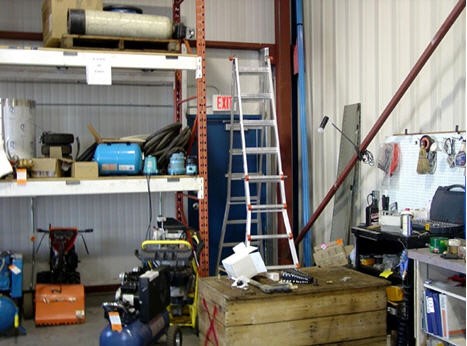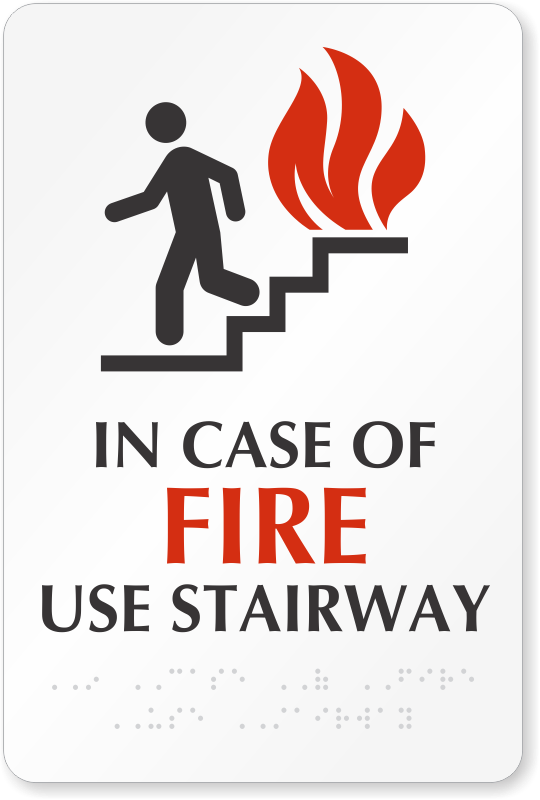Office Safety and Hazard Awareness: Professional OSHA Online Safety Training
Office Safety and Hazard Awareness: Professional OSHA Online Safety Training
Creating a safe and hazard-free office environment is crucial for the well-being and productivity of employees. Office safety and hazard awareness encompass various aspects, including fire safety, workplace harassment, ergonomic practices, and emergency preparedness. Safety and health training provide employees with the awareness, knowledge and skills to maintain a safe and hazard free work environment. By understanding and addressing these factors, companies can foster a secure and accident free workplace.
OSHA General Duty Clause
The Occupational Safety and Health Administration (OSHA) General Duty Clause mandates that employers provide a workplace free from recognized hazards that are likely to cause death or serious physical harm to employees. In an office setting, this clause applies to a variety of potential risks, from fire hazards and ergonomic issues to workplace violence and health concerns. Ensuring compliance with the General Duty Clause involves identifying and mitigating these hazards through regular risk assessments, implementing safety protocols, and maintaining a culture of safety. Effective communication and clear signage, along with strict adherence to fire safety regulations, proper ergonomic practices, and emergency preparedness plans, are essential components of a safe office environment.
Safety and health training are pivotal in meeting the standards set by the OSHA General Duty Clause. Comprehensive workplace safety training programs educate employees on recognizing and responding to potential hazards, thus reducing the likelihood of accidents and injuries. Online health and safety training platforms offer flexible and interactive modules that cover a wide range of safety topics, ensuring that all employees are well-versed in best practices and emergency procedures. Safety and health training not only help in compliance with OSHA regulations but also fosters a proactive approach to workplace safety, leading to a healthier and more secure office environment. Investing in continuous health and safety training empowers employees to contribute actively to hazard prevention, thereby enhancing overall workplace safety and productivity.

Fire Safety in the Office
Office fires are a significant risk, with the National Fire Protection Association (NFPA) reporting thousands of fires annually in business settings. These fires result in numerous injuries, fatalities, and substantial property damage. Key factors in preventing office fires include maintaining clear exits, proper storage of flammable materials, and regular maintenance of electrical equipment.
Occupational safety and health training create awareness for workers on the dangers of and consequences of having blocked exits. Blocked exits pose a critical risk during an emergency. Ensuring that pathways are free of obstructions and clearly marked is vital. The Occupational Safety and Health Administration (OSHA) provides guidelines to help businesses comply with safety regulations, emphasizing the importance of accessible exits and proper fire safety training. Regular fire drills, fire alarms, and designated assembly points further enhance preparedness and ensure swift evacuation in case of an emergency. Daisy chaining, the practice of connecting multiple power strips or extension cords together, is a common but dangerous electrical hazard in the office. This practice can overload electrical circuits, increasing the risk of fires and equipment damage. Damaged electrical cords, such as those with frayed wires or exposed insulation, pose serious shock and fire hazards. Regular inspection and proper use of electrical equipment, along with timely replacement of damaged cords, are essential to maintaining a safe office environment.

Addressing Workplace Harassment
According to the Workplace Bullying Institute’s 2021 survey, 30% of workers have experienced bullying in the workplace. The Equal Employment Opportunity Commission (EEOC) reported receiving 11,497 charges of sexual harassment in fiscal year 2022. Additionally, a study by the Society for Human Resource Management (SHRM) found that 27% of employees have faced sexual harassment at work. Workplace harassment, including bullying and sexual harassment, significantly impacts employee morale and safety.
Statistics reveal that a substantial percentage of employees’ experience bullying or harassment at some point in their careers. Creating a culture of respect and implementing strict anti-harassment policies are essential steps in mitigating these issues. Employers should provide regular online health and safety training and safety courses focusing on recognizing and addressing harassment. This training should cover appropriate workplace behavior, reporting mechanisms, and support resources. Ensuring that employees feel safe and respected not only improves their well-being but also enhances overall productivity and job satisfaction.
Clutter and Good Housekeeping
Clutter and poor housekeeping are often overlooked but can lead to various hazards in the office. Tripping over misplaced items, slipping on wet floors, or navigating through disorganized spaces can result in injuries. Maintaining a clean and organized workspace is essential for preventing accidents.
Encouraging employees to keep their work areas tidy, providing adequate storage solutions, and conducting regular cleaning routines are effective strategies. Good housekeeping practices not only enhance safety but also create a more pleasant and productive work environment.

Ergonomics and Lighting
Ergonomics play a crucial role in preventing workplace injuries and enhancing comfort. Poor ergonomics can lead to musculoskeletal disorders, which are common among office workers. Implementing ergonomic solutions, such as adjustable chairs, proper desk setups, and regular breaks, can significantly reduce these risks.
Lighting is another critical factor in office safety. Inadequate or harsh lighting can cause eye strain, headaches, and reduced concentration. Optimal lighting should provide-sufficient illumination without causing glare or discomfort. Combining natural and artificial lighting sources can create a balanced and comfortable working environment.
Fire Alarms, Emergency Drills, and Assembly Points
Preparedness is key to handling emergencies effectively. Fire alarms and smoke detectors should be installed and regularly tested to ensure they are in working order. Employees should be familiar with the sound of the fire alarm and the procedures to follow when it is activated.
Conducting regular emergency drills is a vital aspect of occupational safety and health training. These drills help employees practice evacuation procedures, locate assembly points, and understand their roles during an emergency. Designated assembly points should be clearly marked and located at a safe distance from the building to ensure everyone can gather safely.
Stairways and Safety Signage
Stairways in the office should be well-maintained and equipped with sturdy handrails. Proper lighting is essential to prevent trips and falls. Additionally, safety signage plays a crucial role in guiding employees and visitors, especially during emergencies.
Clear and visible signs indicating exits, fire extinguishers, first aid kits, and hazardous areas are essential components of workplace safety training. OSHA standards require appropriate signage to ensure employees can navigate the workplace safely and efficiently.



Online Safety Training and Its Importance
In today’s digital age, online safety training has become an invaluable resource for educating employees about office safety and hazard awareness. Online health and safety training programs offer flexibility and accessibility, allowing employees to complete courses at their own pace. These programs cover a wide range of topics, including fire safety, harassment prevention, ergonomics, and emergency preparedness.
Online safety training provides interactive modules, quizzes, and real-life scenarios to reinforce learning. It ensures that all employees, regardless of their schedule or location, receive consistent and comprehensive safety education. Additionally, online platforms can track progress and provide certifications upon completion, ensuring that employees are well-equipped to contribute to a safe and healthy workplace.
Conclusion
Office safety and hazard awareness are essential components of a productive and secure work environment. By addressing fire safety, workplace harassment, ergonomics, clutter, and emergency preparedness, businesses can protect their employees and assets. Investing in online safety training and workplace safety training programs ensures that employees are well-informed and prepared to handle potential hazards.
Creating a culture of safety requires ongoing commitment and education. Regular safety courses, adherence to OSHA guidelines, and fostering open communication about safety concerns are critical steps in maintaining a hazard-free office. By prioritizing office safety and hazard awareness, companies can enhance employee well-being, boost productivity, and create a positive and thriving workplace.
Author: Dr. O’Neil G. Blake, Chief Executive Officer (CEO) of Safety Result Professionals
MS., MBA., MSc., BSc, CSP., ASP., CSHM., CSMP., MRSA.
Date: 06-03-2024












